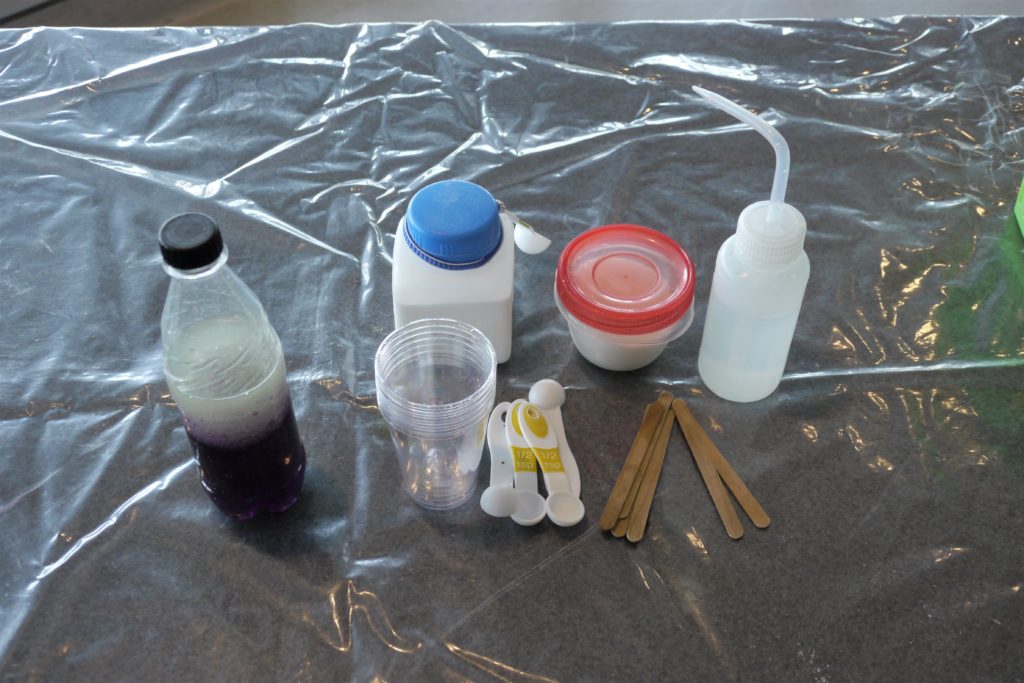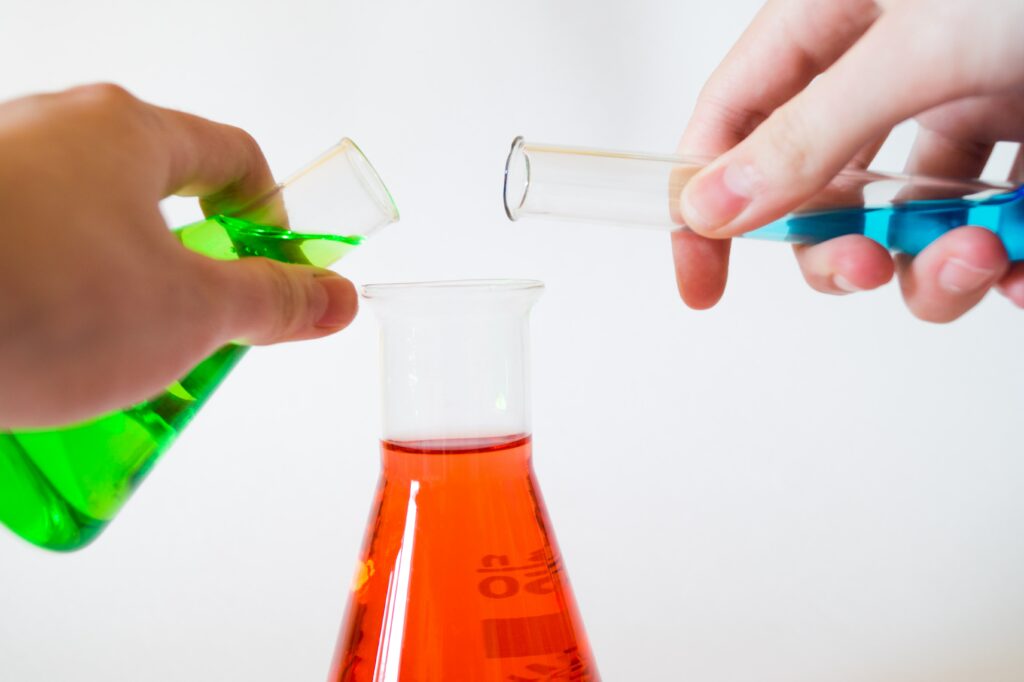Objectives
-
Describe properties of the different states of water.
-
Describe the cohesive and adhesive properties of water.
-
Describe the relationship between capillary action, adhesion, cohesion and surface tension.
Materials
Background
Water is very important to life on Earth. Water is a major component of cells, typically forming between 70% and 95% of the mass of the cell. This means that we are made from approximately 80% water by mass (weight) and some soft-bodied creatures, like jellyfish, are made of up to 96% water. Water also provides an environment for organisms to live in, as 75% of the earth is covered in water. Water circulates through the land just as it does through the human body, transporting, dissolving and replenishing nutrients and other organic matter while carrying away waste material.
Water is the only substance that is widely found in natural environments and exists in all three states of matter (solid (ice), liquid (water), and gas (steam)) within Earth’s ordinary temperature conditions.
Water Chemistry
Each water molecule is made up of two hydrogen atoms and one oxygen atom (H20). Water is not a linear molecule with the atoms all in a row. The two hydrogen atoms form a bond with the oxygen at an angle of 104.5 degrees, making the molecule V-shaped.
The two hydrogen atoms are attached to the oxygen atom by covalent bonds. This means that the hydrogen atoms share their electrons with the oxygen atom.
Although each water molecule is neutral (with the same number of negative electrons and positive protons), the electrons stay closer to the oxygen atom. The result is that the tips of the V (the hydrogen atoms) are more positive, and the bottom of the V (the oxygen atom) is more negative. We thus describe a water molecule as polar, which means that it has a positively charged “end” and a negatively charged “end”. This polarity helps make water both unusual, and useful!
When water molecules are close together, the positively-charged hydrogen atoms are attracted to the negatively-charged oxygen atoms of another water molecule. These attractions are called hydrogen bonds. They are weak individually but the sheer number of them can make the total force keeping all the molecules together quite considerable.
Hydrogen bonding between water molecules leads to many interesting consequences. For example, the boiling point of water, its cohesion and surface tension, and its ability to dissolve salts are all related to hydrogen bonding.
The boiling point of water, 100°C, is unusually high for a molecule with such a low molecular weight. The high boiling point is due to its hydrogen bonding. Boiling water means breaking up all of the hydrogen bonds in liquid water, so the molecules can move further apart and become steam. Breaking those bonds takes energy; thus the higher boiling point for water.
Hydrogen bonds also give liquid water molecular cohesion and a high surface tension.
Cohesion
Because of the extensive hydrogen bonding in water, the molecules tend to stick to each other in a regular pattern. This phenomenon, called cohesion, is easily observed when you carefully overfill a glass with water (by just a little bit!) and observe the water molecules holding together above the rim; this is called a meniscus (eventually, however, gravity overcomes the hydrogen bonds and the water molecules spill down the side of the glass). Likewise, the cohesive property of water allows tall trees to bring water to their highest leaves from underground sources.
Surface Tension
A special type of cohesion is surface tension. The tension on the surface of water occurs when water molecules on the surface are held together by hydrogen bonding. The result is that water behaves like it has a thin skin on the surface. When a water droplet is formed, its spherical shape is the result of surface tension.
Adhesion
Adhesion is the attraction of water molecules to other substances. This is the reason water “sticks” to surfaces and makes things “wet”.
Vocabulary
adhesion: The attraction of water molecules to other substances.
cohesion: The attraction of water molecules to each other.
covalent bond: A form of chemical bonding that involves the sharing of electron pairs between atoms.
electrons: A subatomic particle carrying a negative electric charge.
force: A push or a pull.
hydraulics: The use of fluid to do work.
hydrogen bond: The attraction between an electropositive hydrogen atom of one molecule with an electronegative atom, such as oxygen, from a neighbouring molecule.
hydrophilic: “Water loving”.
hydrophobic: “Water fearing”.
hydrostatic equilibrium: The pressure throughout a fluid at rest (“hydro” + “static”) is due to the weight of the fluid above it.
incompressible fluid: A fluid having a constant density or volume.
ions: Atoms or molecules in which the total number of electrons is not equal to the total number of protons, giving it a net positive or negative electrical charge.
non-polar: Describes a molecule with an even charge throughout it.
nucleus: The very dense region at the center of an atom.
piston: A disk or short cylinder fitting tightly within a tube in which it moves up and down against a liquid or gas.
polar (polarity): A polar molecule has both a positively and negatively charged “end”.
proton: A subatomic particle with a positive electrical charge. One or more protons are present in the nucleus of each atom, along with neutrons.
solvent: A liquid, solid or gas that can dissolve another solid, liquid, or gas.
substance: Any physical matter or material.
surface tension: The “skin” on the surface of water, due to cohesion between its molecules.
viscous: Thick or “syrupy”, describing a liquid.
Other Resources
HowEverythingWorks | Supplements | Section 15.1: Water, Steam, and Ice
Kentchemistry| Hydrogen Bonding – Water Drops on a Penny
TedEd | Video| Why Don’t Oil and Water Mix
San Diego State University | Department of Astronomy | Article | Hydrostatic Equilibrium
YouTube | Educational Innovations | Sodium Polyacrylate – The “Diaper Polymer”
University of Regina | Centre for Mathematics, Science and Technology Education | QuickStarts | Soap Powered Boat
To purchase sodium polyacrylate (the “diaper polymer”): Educational Innovations


